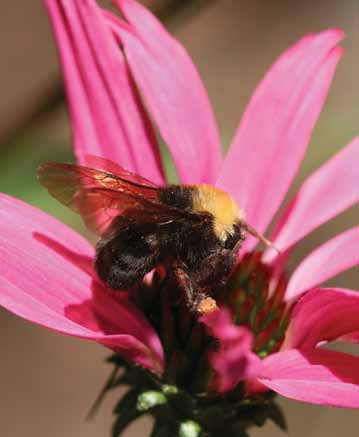
Bombus franklini photograph by James P. Strange, USDA-ARS Pollinating Insect Research Unit, Public domain, via Wikimedia Commons
A year ago in October of 2021, we posted about the legal status of bumble bees in California. Four of these bumble bees (B. franklini, B. crotchii, B. occidentalis, B. suckleyi) were petitioned for listing as endangered species under the California Endangered Species Act (CESA) in 2018. The California Fish and Game Commission determined that listing all four species as endangered “may be warranted” in June 2019, and the species advanced to candidacy. The Commission’s determination was challenged in court soon after, and candidacy or related protections were stayed during much of the ensuing litigation. A California court of appeal ultimately upheld the Commission’s determination, and the state Supreme Court declined to review the case. Candidacy was reinstated for all four bumble bee species on September 30, 2022. As candidate species, they receive the same legal protection afforded to endangered or threatened species (Fish & G. Code, §§ 2074.2 & 2085).
Both the Suckley’s and western bumble bees have been petitioned for federal listing and received positive 90-day findings. The species status assessment for western bumble bee is scheduled to be released in fiscal year 2024, and Suckley’s in fiscal year 2025.
The California Natural Diversity Database (CNDDB) tracks an additional two species of bumble bee considered species of greatest conservation need. This table includes the current status of all bumble bees tracked by the CNDDB:
| Common Name |
Scientific Name |
State
Status |
Federal
Status |
NatureServe
State Rank |
Other Status |
| Franklin's bumble bee |
B. franklini |
Candidate |
Endangered |
S1 |
IUCN Critical |
| Crotch bumble bee |
B. crotchii |
Candidate |
None |
S1S2 |
IUCN Endangered |
| western bumble bee |
B. occidentalis |
Candidate |
None |
S1 |
IUCN Vulnerable |
Suckley's cuckoo
bumble bee |
B. suckleyi |
Candidate |
None |
S1 |
IUCN Critical |
| obscure bumble bee |
B. caliginosus |
None |
None |
S1S2 |
IUCN Vulnerable |
| Morrison bumble bee |
B. morrisoni |
None |
None |
S1S2 |
IUCN Vulnerable |